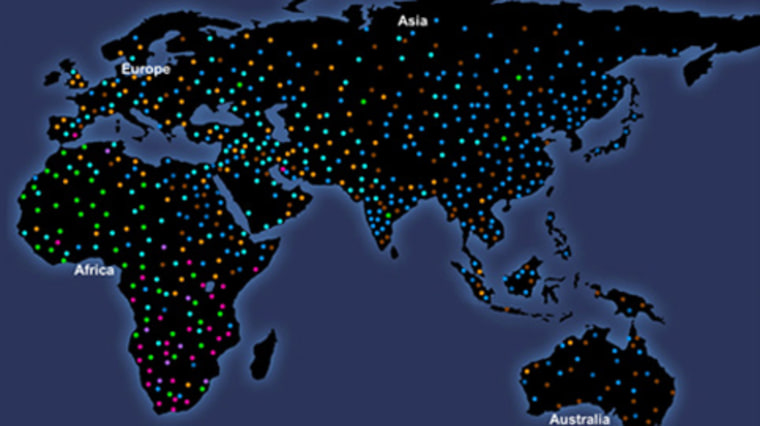According to current research, the African continent is the ancestral home of modern humans. Scientists studying patterns in human genetic variation have observed the greatest amount of human genetic diversity in African populations. Genetic variation outside of Africa—in Europe and Asia—includes some, but not all, of the genetic variation found in Africa, which suggests that between 140,000 and 290,000 years ago, Homo sapiens migrated out of Africa to colonize Europe, Asia and the Americas. This “Out of Africa” theory is supported by studies of mtDNA, the Y chromosome, portions of the X chromosome, and some but not all autosomal (non-sex determining) regions, as well as the archaeological record.
The role of genetics in human variation had to evolve before the "Out of Africa" theory of ancestry could be fully understood. Perhaps the most significant scientific development in helping to further understand human biological variation was the discovery of genes and the growth of genetic research. In 1905, British biologist William Bateson coined the term "genetics," building on Gregor Mendel's work, which was not initially understood. Alfred Sturtevant developed the first map of a human chromosome in 1913. Five years later, R.A. Fisher's work combined genetic research with evolutionary biology, but it wasn't until 1944 that scientists Oswald Theodore Avery, Colin McLeod and Maclyn McCarty were able to isolate DNA as human genetic material.
In 1953, James D. Watson and Frances Crick discovered the double helix structure of DNA.
In 1956, Jo Hin Tjio and Albert Levan determined that there are 46 human chromosomes.
In 1966, Marshall Niremberg, Heinrich Mathaei and Severo Ochoa cracked the human genetic code, opening the door for the explosion of genetic engineering studies and achievements beginning in the late 1970s. The genetic code is the set of rules by which information encoded in genetic material (DNA or RNA sequences) is translated into proteins (amino acid sequences) by living cells.
In 1972, scientists Stanley Cohen and Herbert Boyer developed recombinant DNA (rDNA) technology, an artificial DNA sequencing process that “recombines” the DNA of two different organisms.
In 1977, molecular geneticists Walter Gilbert and Allan Maxam pioneered a new DNA sequencing method.
In 1981, population geneticist Luigi Luca Cavalli-Sforza established the dual inheritance theory with Marcus Feldman which suggests that human variation is the result of both biological and cultural evolution.
In 1983, scientists successfully mapped the first human disease gene — the gene for Huntington's disease — with DNA markers.
In 1989, Francis Collins and Lap-Chee Tsui sequenced the first human gene. It encoded the CFTR protein, the defective gene that causes cystic fibrosis.
In 2001, the Human Genome Project and Celera Genomics released the first draft sequences of the human genome.
The Human Genome Project was successfully completed with 99% of the human genome sequenced to within 99.99% accuracy.
